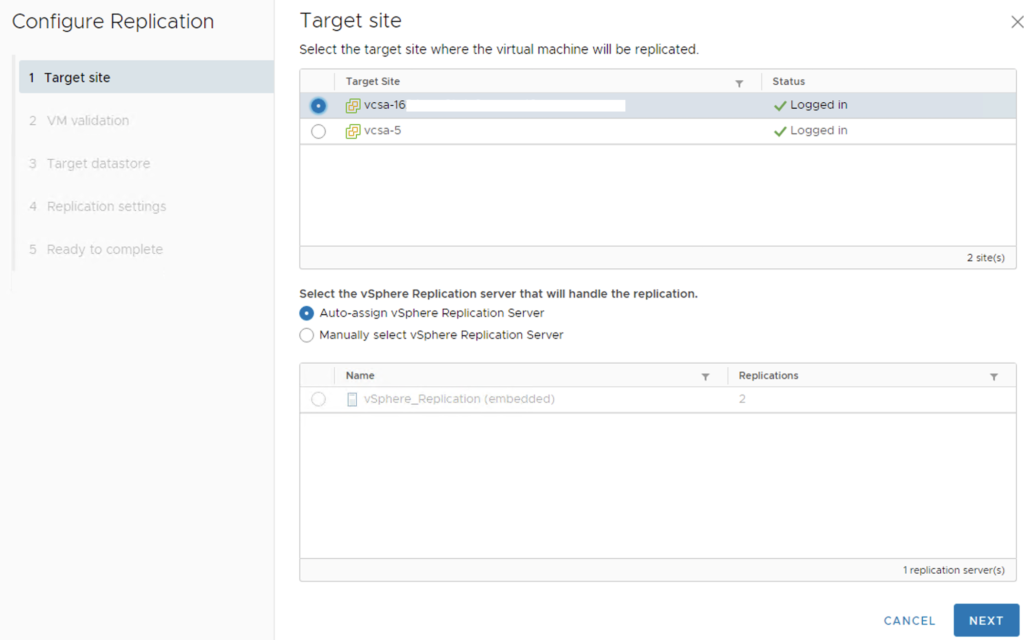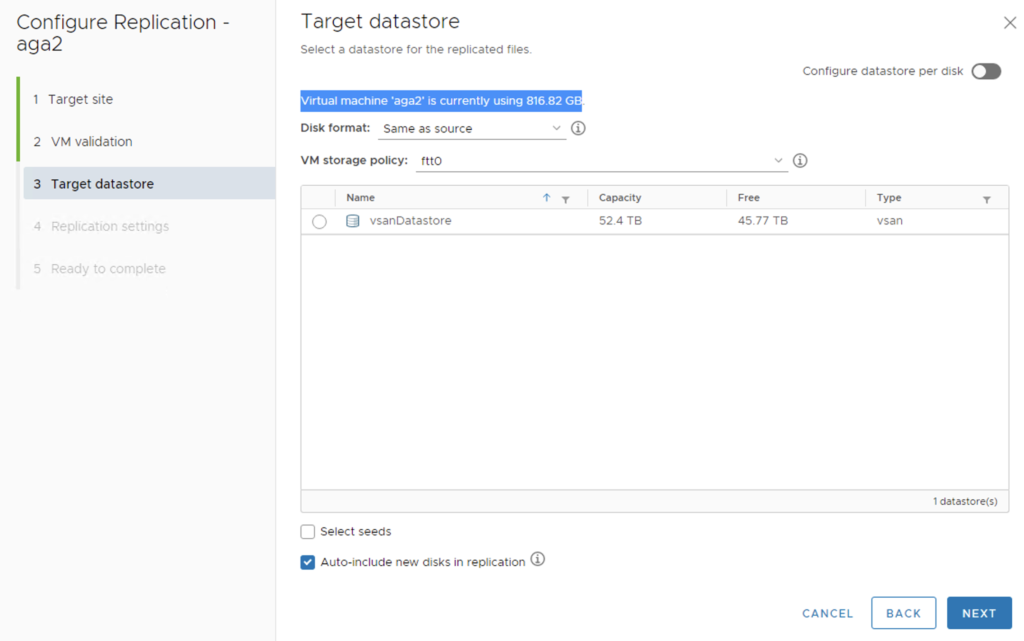VMware vSphere Replicaton Appliances VRA installed on Protected and Recovery sites enable replication of VMs between those locations. VRA is very popular and well documented. The question is how its latest edition integrates with vSAN 7.0 U1?
The best way to check is to install and test both solutions. The configuration proces is simple, we domwnload ova, deploy it on both sites, make sure an appliance is reachable by local vCenter (DNS and NTP are required) and a service account we use for registering VRA in vCenter has sufficient privileges. During installation, we get a Site Recovery plugin in a local vCenter and VR Agent on each local ESXi.

VRA can work as standalone solution providing replication service between clusters under the same vCenter. Paired with remote VRA offers a protection from a site failure. It integrates with vCenter we can setup a VM protection directly from vCenter UI.

After site pairing is done, we can start replication tasks. In this example both sites are vSAN 7.0 U1 clusters. To check how vSAN SPBM integrates with VRA, I will create a task to change vSAN SPBM when replicating on the destination site.
VM aga_2 has a 400 GB VMDK disk on the source side. It has FTT-1 mirror SPBM policy with Object Space Reservation 100%. This means I get 2 copies of VMDK on the vSAN datastore and it occupies around 800 GB of space.



From the source vCenter I can now configure replication for this VM,

The steps are simple, we have to select a Target site (vCenter-16).

VRA checks if this VM can be configured for replication.

For a vSAN datastore at a Target site we can select (even per disk) a different vSAN storage policy than the one at a Source site. In this scenario I select FTT-0 SPBM, which means I will have just one copy od the VMDK (not recommended in production!). Sometimes it happens a budget for a remote site is limited and a storage space there may not be sufficient to store more copies of the data. I want to check if it is possible to replicate from FTT-1 to FTT-0. If yes, in real-life scenarios we could save some space and have for example RAID-1 mirror on a Source side and a RAID-5 on Destination.

The most important part of the replication setup is setting Recovery Point Objective and the number of points in time (snapshots) we can revert to in case of a failure at the Source site.




After a successful syncing between Source and Target sites, we can RECOVER aga2 VM. This means it will be registered on Target site. It can also be powered on right away.






vSAN storage policies integrate with VRA. This is not a new feature introduced in 7.0 but I still remember some time ago replicated VMs had always Default vSAN Policy (2 copies) and manual SPBM refresh was required after recovering a VM. There was no way to save space on the Target site with the SPBM policy change as it had to be re-applied later.
What is new in 7.0 is the fact that vSAN Capacity Report in vCenter UI shows how much data is used by vSphere Replicaton. In previous versions we were not able to detect how much of a vSAN capacity was used by disk replicas.

A small advice at the end. VM replicas are not registered in a Target vCenter, so it is easy to miss the actual size they use. We will not see so many VMs under vCenter but the replicas will be there. Check usage breakdown regularly. If you keep many point in time copies of the VM, the number of the vSAN components will also grow (with FTT- policy each object will have 3+ components ). It is good to check Capacity utilisation in vSAN Skyline Health: “What if the most consumed host fails”. Component utilisation in vSAN environments that are target for vSphere Replication is usually high.


